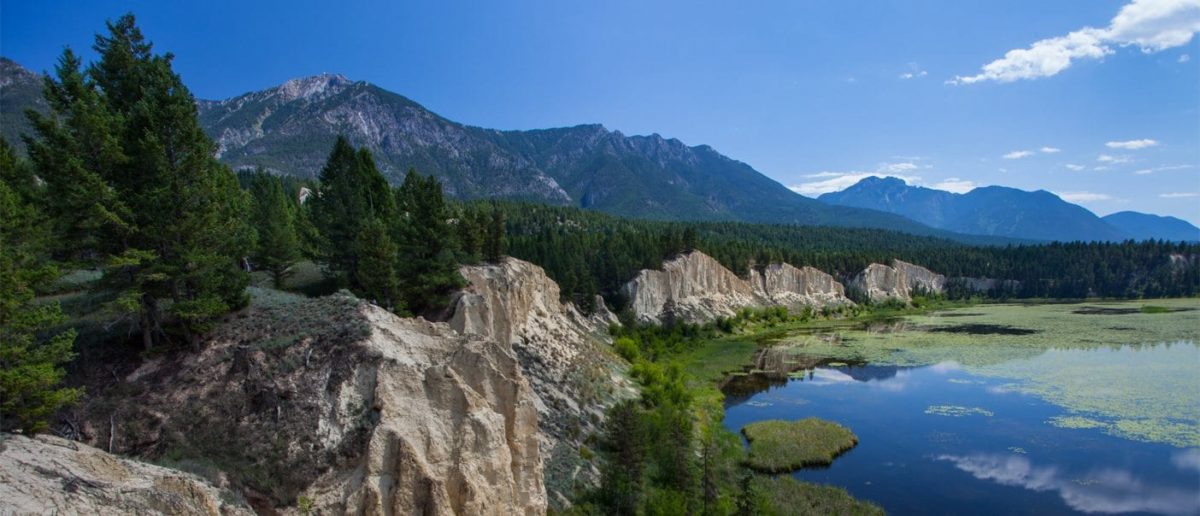
Take a love of photography, add a degree in biology, mix in a passion for the natural world and you have Graham Osborne. This master landscape photographer captures the essence of many of The Nature Trust of British Columbia’s properties across the province.
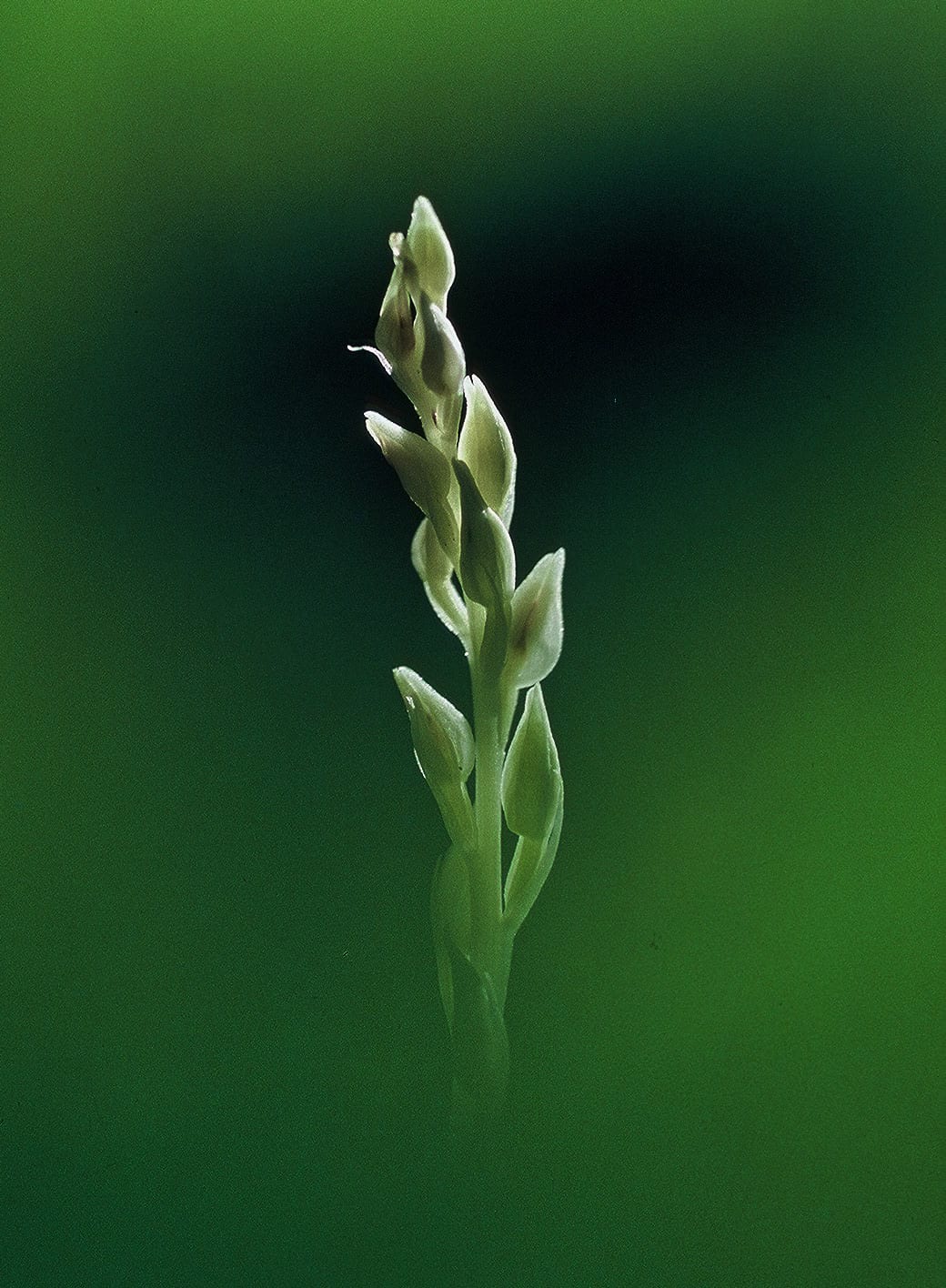
Twenty-five years ago when Graham was working as a naturalist and photographer for Parks Canada, he had no idea his career was going to get a kick start thanks to a volunteer project for The Nature Trust and a photo of an orchid. On a misty morning Graham captured a shot of a Phantom Orchid (see photo on left) that was so stunning it ended up on the wall of The Nature Trust’s office and began an association that continues to this day.
We spoke with Graham from his home on 80 acres overlooking wetlands in Creston. A place where Graham says his three children can build tree forts and catch frogs like he did as a kid and that led to his love of the outdoors. We learned that nature photography frequently requires rising at 4 a.m. to catch the morning light and can involve harrowing encounters with Grizzly Bears.
Are there special memories of your Nature Trust assignments?
Shooting on the Khutzeymateen River, where The Nature Trust helped to fund bear research, was a memory that stands out because I had an intense experience with a Grizzly. I was camped near a river when in the pre-dawn hours a Grizzly began circling my tent. I could feel the vibration of her stomps through my pillow! At one point she woof-roared in my ear – a sound you never want to hear in your life. She was upset because one of her cubs was stranded on the other side of the river. At daylight she swam
across the river to get him. I had envisioned it ending badly because I was “bear fragile”. Only three months before I had been charged and treed by a Grizzly in Banff.
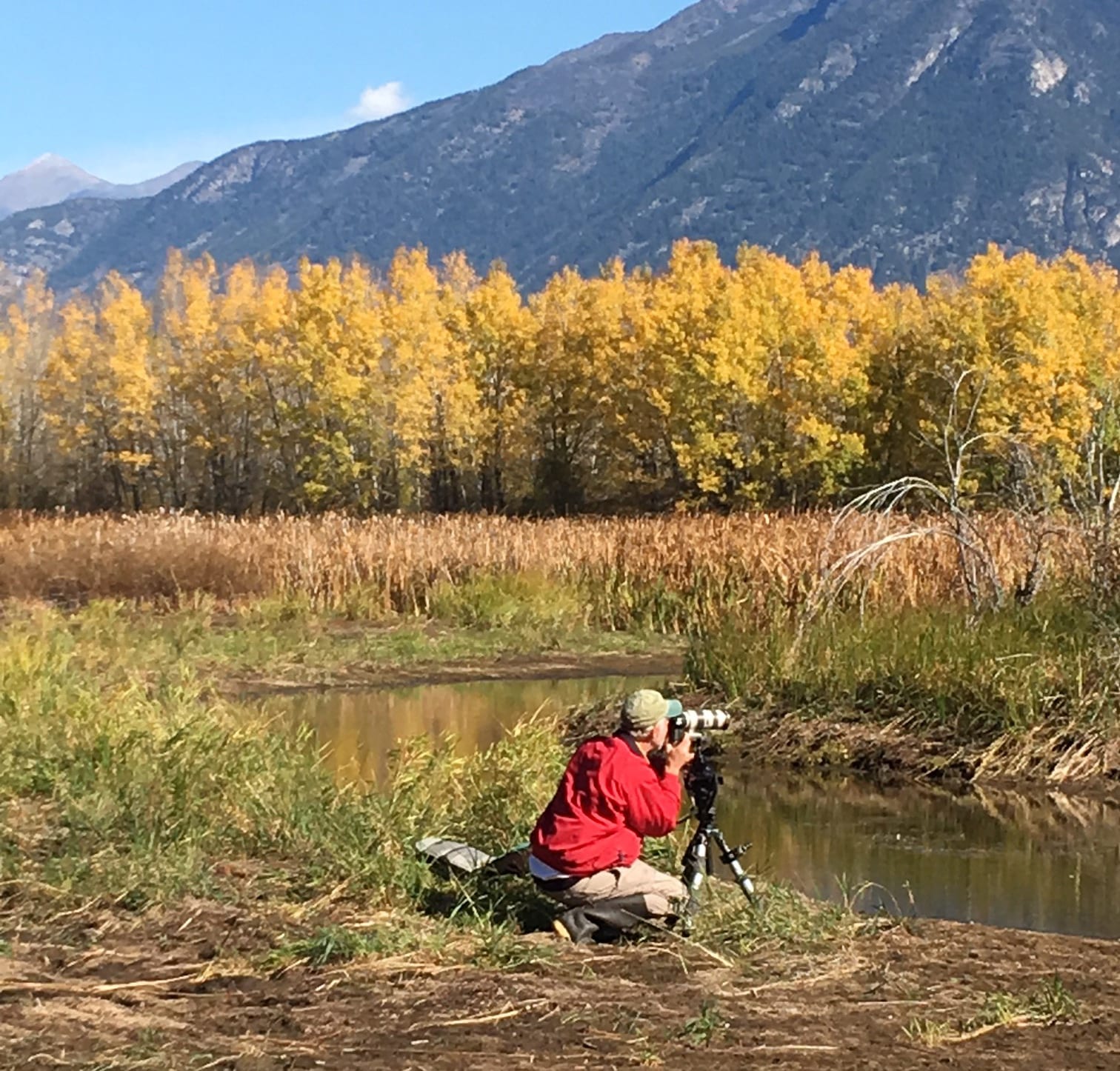
Another memorable moment happened at the Koeye River Estuary when I took a picture that is my career
favourite. It’s a photograph of a leaping salmon at dawn. I was up at 4 a.m. to get to a spot I’d scouted the day before and everything lined up: a beautiful mist and golden light, a fresh run of pink salmon, then, a salmon leapt in exactly the right spot in the frame. I took the shot but wasn’t sure if I had captured it or not…
But you never know what you might face in the field. Once after shooting at a Nature Trust property in the wilderness near Dawson Creek, I got caught in a downpour on a rain-slicked clay road. I had to use straw from a nearby barley field for traction. It took three hours of slip-sliding to drive two miles.
Does your background as a biologist contribute to your nature photography?
Being a biologist builds a foundation for everything I photograph. I understand how ecosystems work and the interactions with wildlife and habitats. When I photograph a Nature Trust property I’m not just trying to make it look pretty. I’m trying to show visually the ecological value of the land from a biologist’s point of view, but in an artistic way. I try to give a sense of why The Nature Trust has purchased this particular property, and give a deeper appreciation for what this organization does.
The Nature Trust assignments are my favourite because of their great work. I like to feel that my photography has contributed to habitat protection and good ecological stewardship in the province.
I feel like The Nature Trust is my family. We’ve been friends since the 1980s. I love what they do and I feel very privileged to be part of it.
What are some of the Nature Trust assignments that you’re excited to be working on now?
I’ve just finished a shoot at a beautiful Nature Trust-protected wetland over looking rolling country on the Columbia River Wetlands-Edgewater property in the Kootenay.
And I recently had one of the favourite morning shoots of my life at Bummers Flats near Cherry Creek. It was at a spot overlooking the S-curves of the Kootenay River and one of the most spectacular scenes I’ve ever photographed.
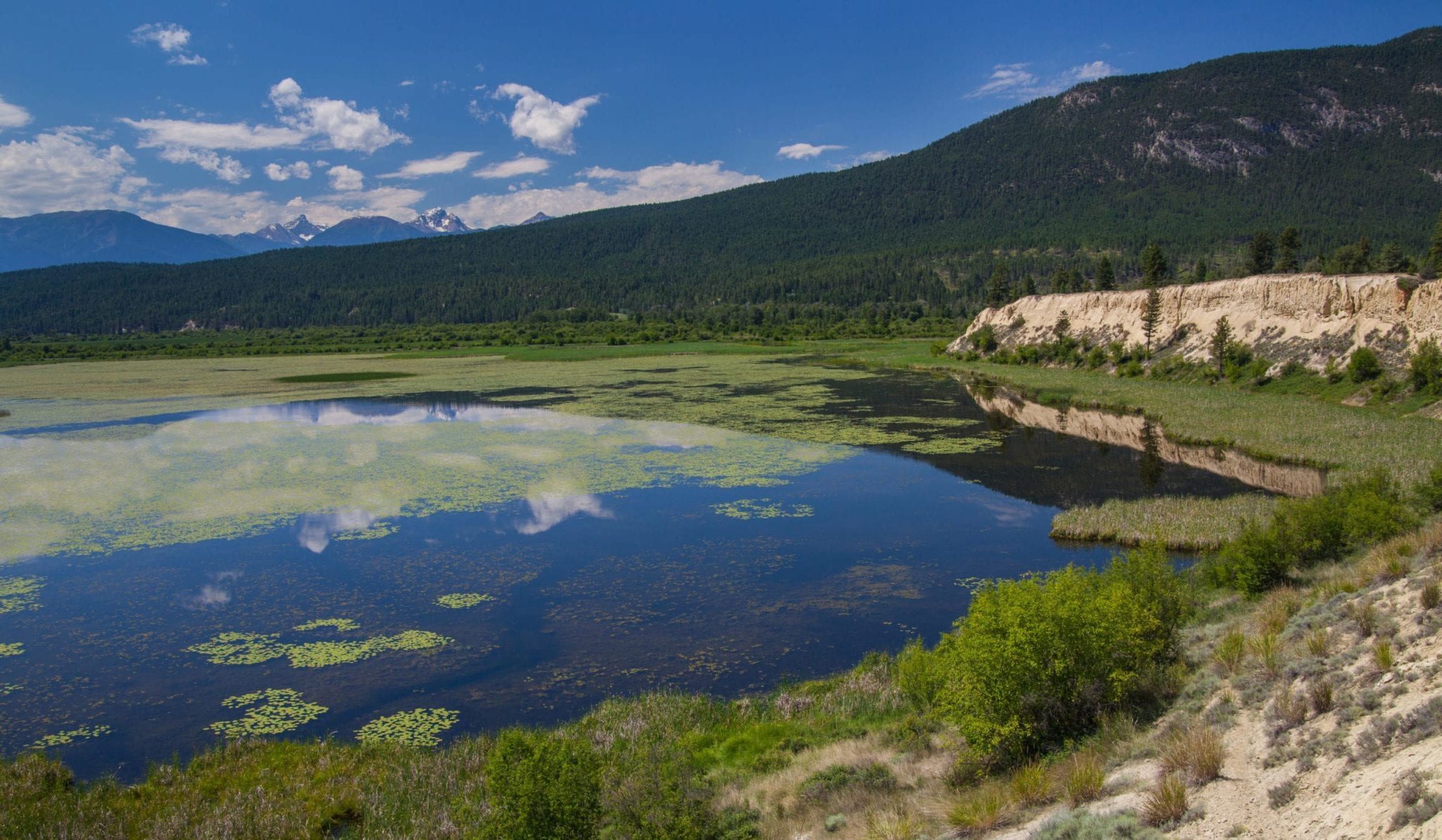
NTBC Columbia River Wetlands – Edgewater conservation property
Do you always try to bring the viewer into the scene in your photographs?
Yes. I know a lot of people are never going to see the scene I’m photographing so I feel very privileged to be able to capture these images and share them.
These images are a moment preserved in time. It’s a moment that is never going to happen again in the same way.
I love what I do and I want to bring my best to it but on assignments for The Nature Trust there’s an added bonus. I’m gathering images from these spectacular areas that are going to help with their protection. It adds another level to what I do. It’s not just shooting pretty pictures; it’s about getting pictures that might have some impact on environmental issues. I love being part of that.
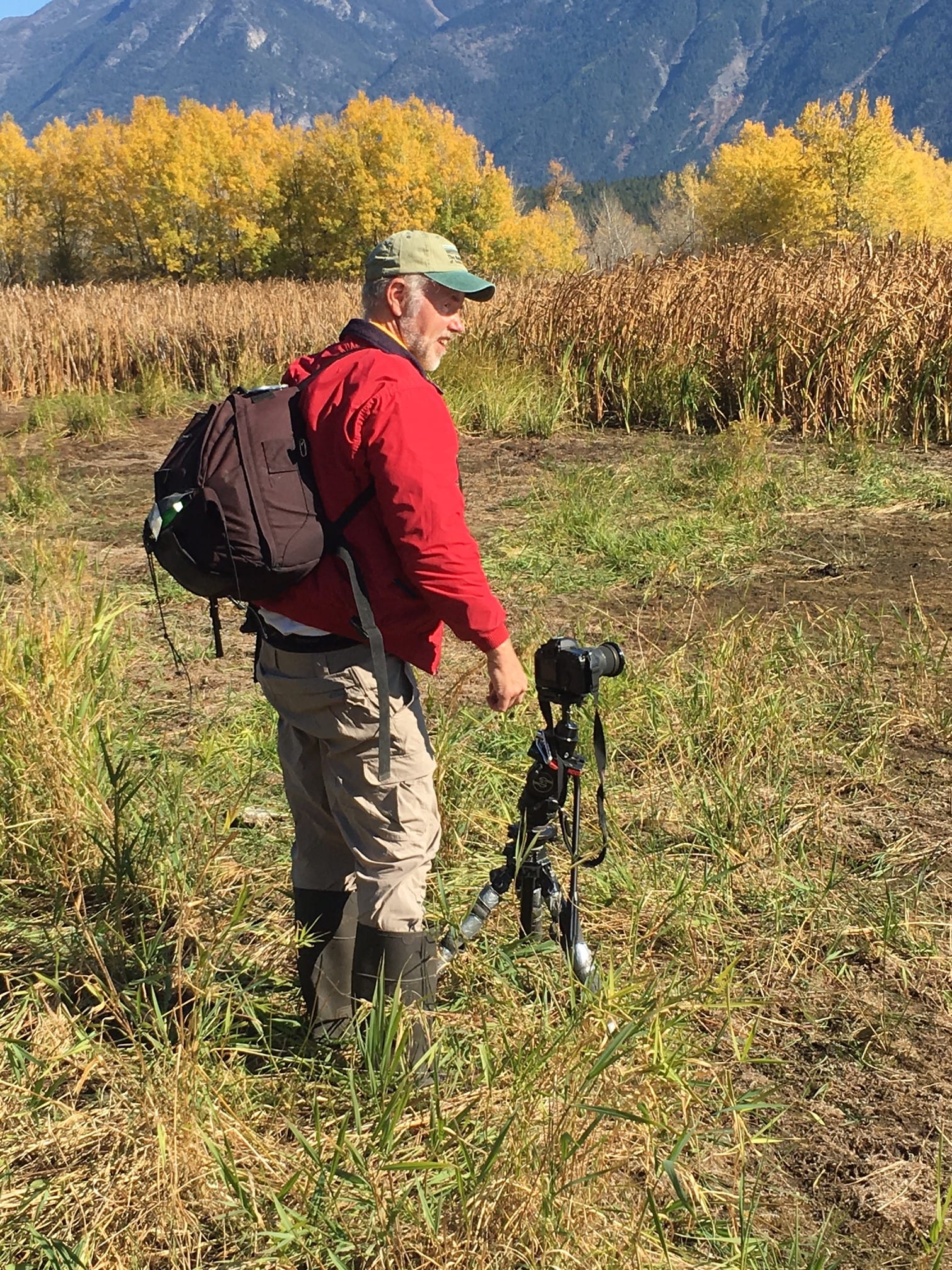
How big a role do you think photography plays in in helping people understand land conservation?
I think photography is one of the most valuable ways to show people what The Nature Trust is trying to do. There are people willing to donate money to protect the environment but it helps if they are able to see what they are protecting. It gives people a true sense of what they are contributing to and how ecologically valuable and beautiful these lands are.
Do you think there’s greater awareness of the need for conservation today?
Thirty or forty years ago there wasn’t the kind of talk about the environment, ecological concerns and conservation that there is today. People are seeing that things need to be preserved. That there are places that need to be set apart. That if we’re not careful we’re going to lose key habitats.
There’s an interaction and a depth to relationships in the ecosystem that we don’t fully understand. I think people are more aware of that today. And groups like The Nature Trust have a big part to play in creating that awareness.
What do you think makes The Nature Trust of BC different?
The Nature Trust works quietly behind the scenes. They get people working together at all levels from the private and public sectors to corporate and government. They work to build bridges and that has great value.
Any group that feels a sense of environmental stewardship, especially corporate groups, has an opportunity to exercise that stewardship with The Nature Trust.
The Nature Trust is known for being very responsible with the money they have, how they spend it and what they spend it on. Could they do more? Yes. But that requires more funding.
A non-profit group that’s been around as long as The Nature Trust of BC has credibility. They have a track record and that gives donors confidence. You just have to look at what they’ve done. This is an organization that has a lot of positive accomplishments in terms of land preservation. People respect that.
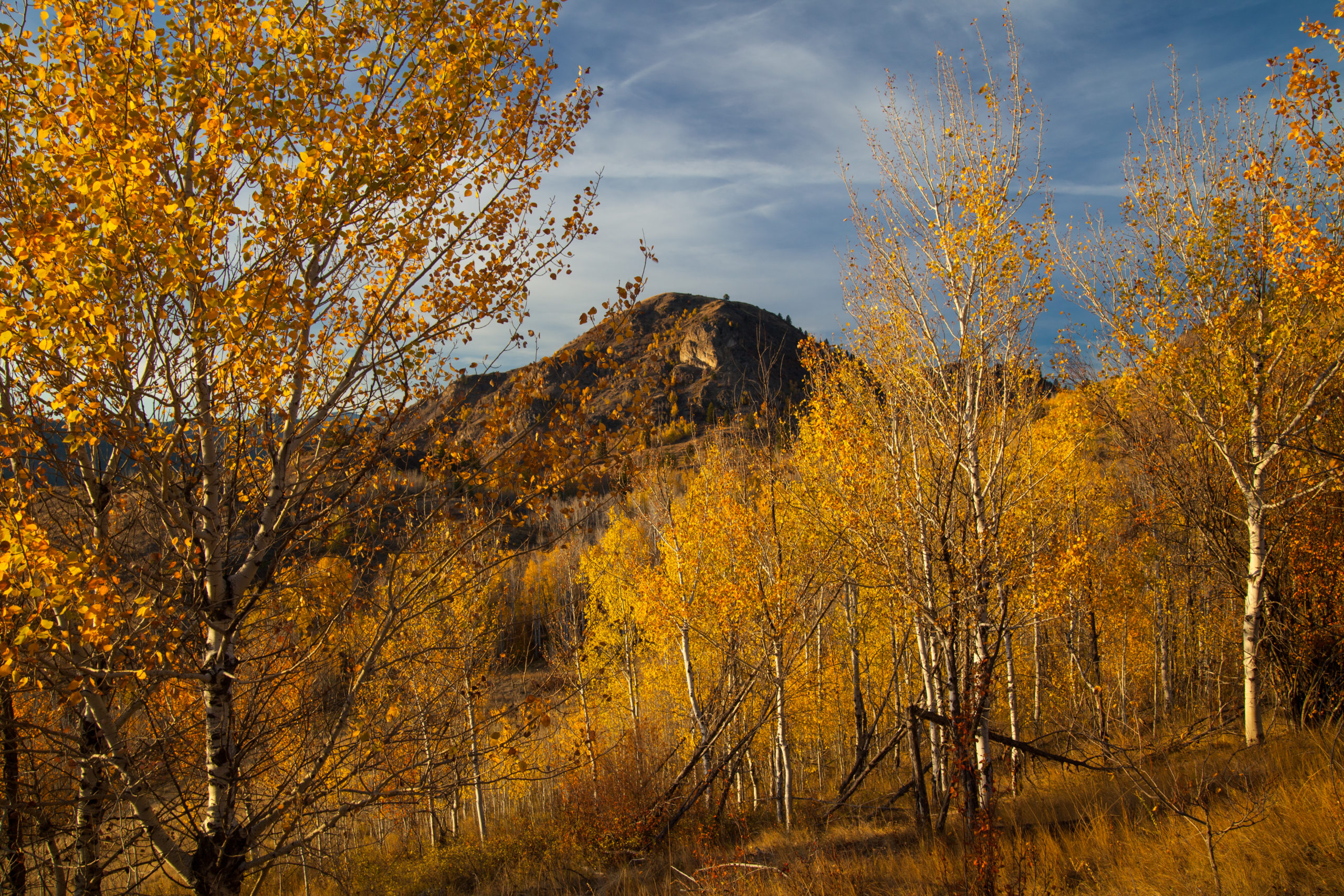
NTBC Grand Forks conservation property
Books by Graham Osborne include: British Columbia – A Wild and Fragile Beauty, Vancouver Wild – A Photographer’s Journey through the Southern Coast Mountains, Rainforest—Ancient Realm of the Pacific Northwest, Wildflowers—Seasonal Splendors of the North American West.
Many photos by Graham Osborne are featured in The Nature Trust of British Columbia book.
